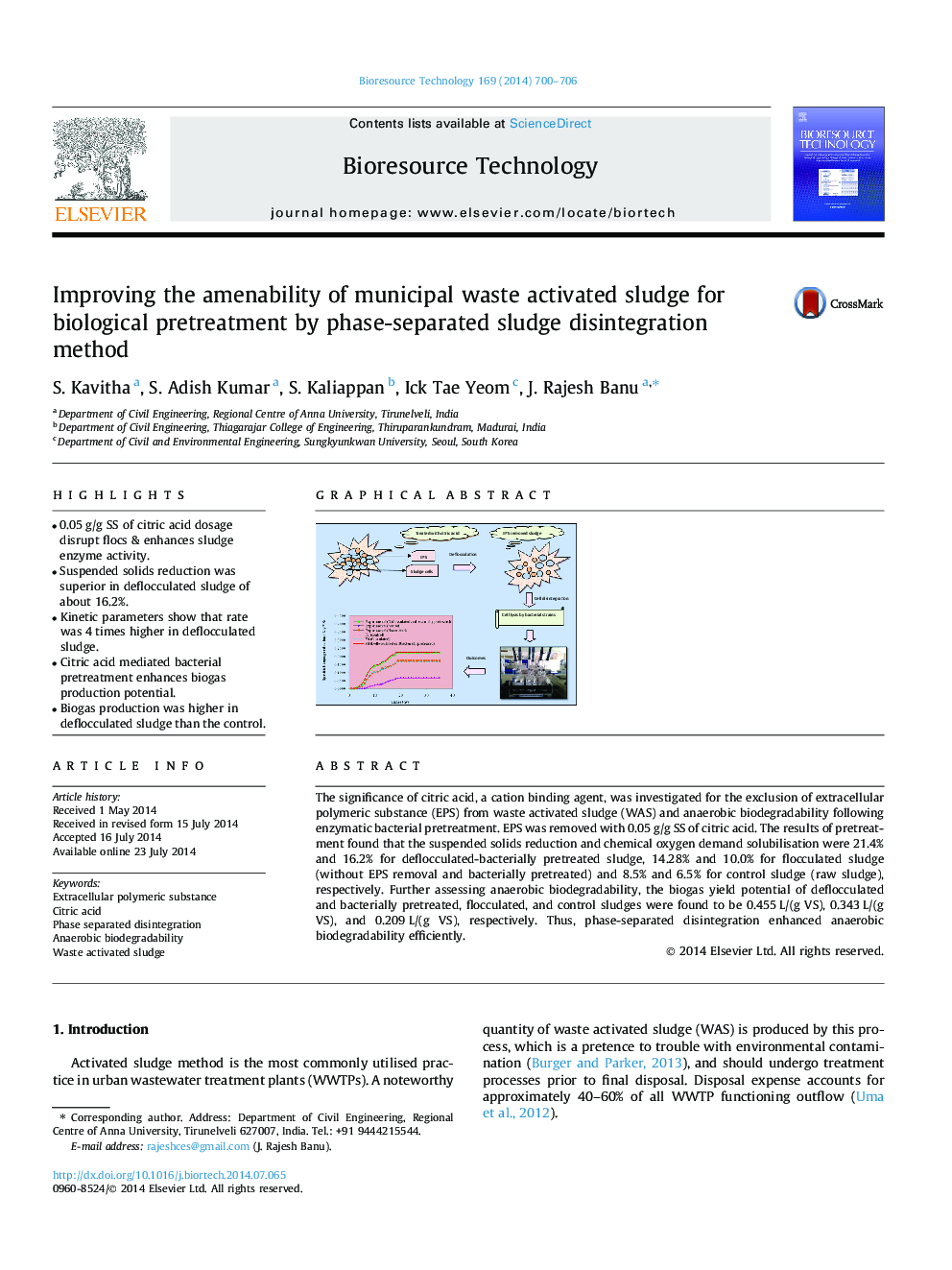| Article ID | Journal | Published Year | Pages | File Type |
|---|---|---|---|---|
| 680629 | Bioresource Technology | 2014 | 7 Pages |
•0.05 g/g SS of citric acid dosage disrupt flocs & enhances sludge enzyme activity.•Suspended solids reduction was superior in deflocculated sludge of about 16.2%.•Kinetic parameters show that rate was 4 times higher in deflocculated sludge.•Citric acid mediated bacterial pretreatment enhances biogas production potential.•Biogas production was higher in deflocculated sludge than the control.
The significance of citric acid, a cation binding agent, was investigated for the exclusion of extracellular polymeric substance (EPS) from waste activated sludge (WAS) and anaerobic biodegradability following enzymatic bacterial pretreatment. EPS was removed with 0.05 g/g SS of citric acid. The results of pretreatment found that the suspended solids reduction and chemical oxygen demand solubilisation were 21.4% and 16.2% for deflocculated-bacterially pretreated sludge, 14.28% and 10.0% for flocculated sludge (without EPS removal and bacterially pretreated) and 8.5% and 6.5% for control sludge (raw sludge), respectively. Further assessing anaerobic biodegradability, the biogas yield potential of deflocculated and bacterially pretreated, flocculated, and control sludges were found to be 0.455 L/(g VS), 0.343 L/(g VS), and 0.209 L/(g VS), respectively. Thus, phase-separated disintegration enhanced anaerobic biodegradability efficiently.
Graphical abstractFigure optionsDownload full-size imageDownload as PowerPoint slide
